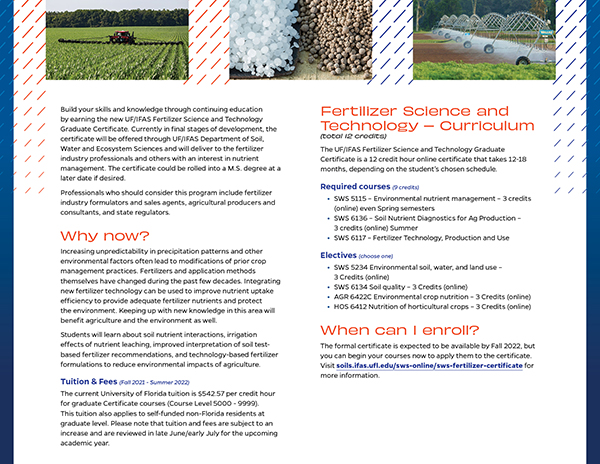A good brochure effectively conveys information and engages its audience through attractive design and compelling content. Here are some key elements that contribute to a good brochure:
- Purpose: The brochure should have a clear objective, convey its purpose to the reader, and should be apparent from the start
- Audience: When developing a brochure, consider the target audience and tailor the content and design to appeal to them.
- Engage: The cover is the first thing people see, so it should be visually appealing and compelling. Include an attention-grabbing headline, captivating imagery, and a line or two of information that quickly communicates the central message.
- Organize: The brochure should be organized logically, with the information presented in a structured manner. Use headings, subheadings, bullet points, and visual cues to guide readers through the piece. Establishing a clear hierarchy makes it easy to skim.
- Design and Branding: An appealing design captures attention and enhances the overall message. Use high-quality images and graphics that relate to the content and create visual interest. Utilize the brand color pallet, typography, graphic assets, and layout options to make the brochure easily recognizable as something from the University of Florida. (See resources below for more branding information.)
- Content: Keep the text relevant, focused, and brief. Use clear and engaging language that resonates with the target audience. Highlight key benefits that will interest readers.
- Balance: A good brochure strikes the right balance between visuals and text. Avoid overwhelming the reader with excessive text or including too many images. Strategically create white space to give the reader time to comprehend the content and help guide them through the brochure.
- Call to Action: Include a call to action encouraging readers to get more information. The call to action could be a website address, phone number, or an address.
- Proofread and Edit: Proofread the content multiple times and have someone else review the brochure to ensure it is free from grammatical errors, typos, and inconsistencies.
- Get Help: Enlist the help of professional graphic designers to assist you with designing your brochure. UF/IFAS Communications designers will ensure your piece follows all UF and UF/IFAS brand guidelines. We will also provide you with an ADA-compliant digital version for people who use assistive devices.
Utilize these principles to build a brochure that effectively communicates information, interests the audience, and leaves a positive impression about your product or service.
Sample brochure
Below is a sample of a well-put-together that follows all the principles above.


Featured image by SQS – stock.adobe.com
Resources:
- UF Brand Center
- UF/IFAS Branding Website
- Submit a request here: http://tinyurl.com/ICS-Request-Form
 1
1
